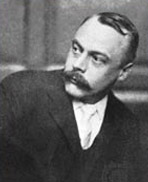Clan Graham People
Sir John de Graham, (1235-1298)
Friend and “Right Hand of Wallace” who died at Falkirk.
James Graham, fifth Earl and 1st Marquess (1612-1650)
“The Great Montrose” who is a legendary figure and one of the greatest military minds that ever lived. He was a soldier, a poet, a scholar and a loving husband who wrote “He either fears his fate too much, or his deserts are small who dares not put it to the touch to gain or loose it all.”
John Graham of Claverhouse, Viscount Dundee (1648-1689)
Was a great military leader and diplomat who lead the Highland Scottish clans to victory at the Battle of Killiecrankie in the first Jacobite rising. He died on the field at Killiecrankie in 1689.
James Graham (1745-94)
It is not clear if devout vegetarian Graham ever graduated from his medical studies in Edinburgh, but he made a living for himself effecting remedies and selling medicines across Britain and America. He enjoyed publicity, which was just as well as he was imprisoned for fraud on a number of occasions.
He also earned himself a mention in the “Dictionary of National Biography” as ‘a quack and possibly a madman’.
James Gillespie Graham (1776-1855)
Dunblane-born James Gillespie was the Clerk of Works on Skye when his career as an architect took off with a commission for the County Buildings of Cupar.
He took the name Graham when he married heiress Margaret Graham in 1810. Among the buildings he went on to design were St John’s Tollbooth and St Mary’s Church in Edinburgh, and Taymouth Castle in Perthshire.
Sylvester Graham, (1794-1851)
The inventor of the Graham Cracker.
Thomas Graham (1805-69)
A student of Glasgow University at fourteen years of age, Graham went on to be a Professor of Chemistry there, advancing his research into arsenates and phosphates. He left Glasgow for University College London, and was to become Master of the Mint.
He defined the law of gas diffusion and the fundamentals of colloid chemistry, for which his statue was raised in Glasgow’s George Square.
Kenneth Grahame (1859-1932)
Claiming descent from Robert the Bruce, Grahame was the son of an Edinburgh advocate and studied at St Edward’s College, Oxford. In 1879 he joined the Bank of England as a clerk and by 1898 became Secretary of the Bank.
He is best remembered however for his writing, which he began in 1886. He contributed to the “National Observer” and the “Yellow Book”. In 1908 he retired from the bank for health reasons and published his most popular work, “The Wind in the Willows”, which he had written for his son.
Quick Links to Clan Graham Products from The Clan Shop
- Graham Tartan Tie
- Graham Tartan Pocket Square Handkerchief
- Graham Tartan Scarves
- Graham Tartan Kilts
- Graham Clan Crest Badge
- Graham Clan Crest Mug
- Graham Clan Crest T-Shirts
- Graham Clan Crest Belt Buckle
- Graham Phone Covers
- Graham Tartan
- Graham Clan Crest Crystal Glasses
- Graham Clan Crest Cufflinks
- Graham Clan Crest Sgain Dubh
- Graham Clan Crest Kilt Pin
- Graham Clan Crest Plaques








